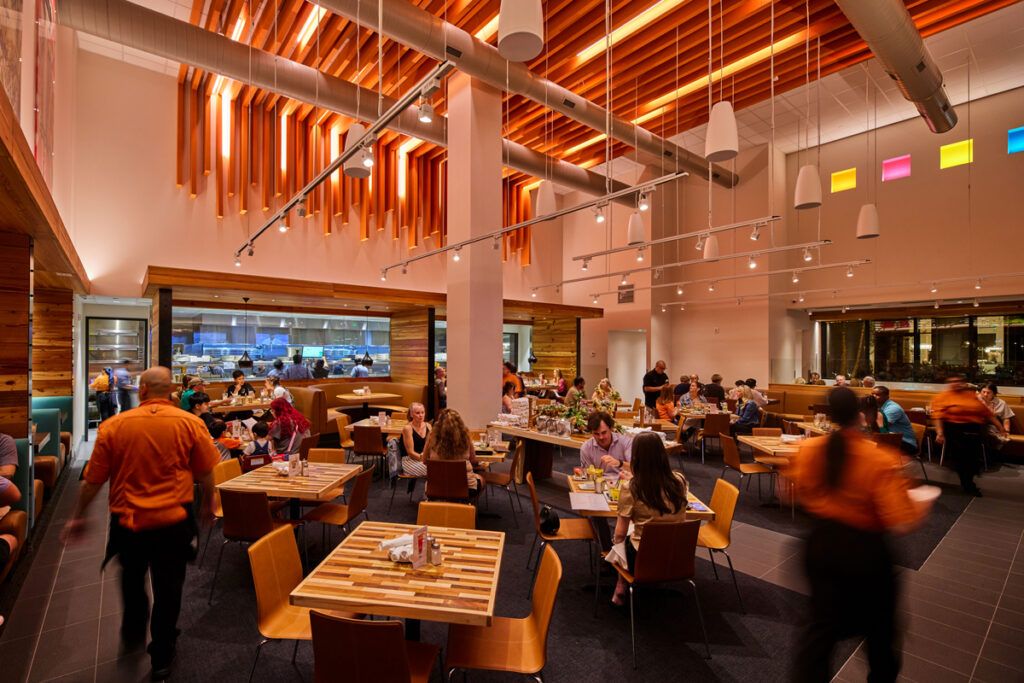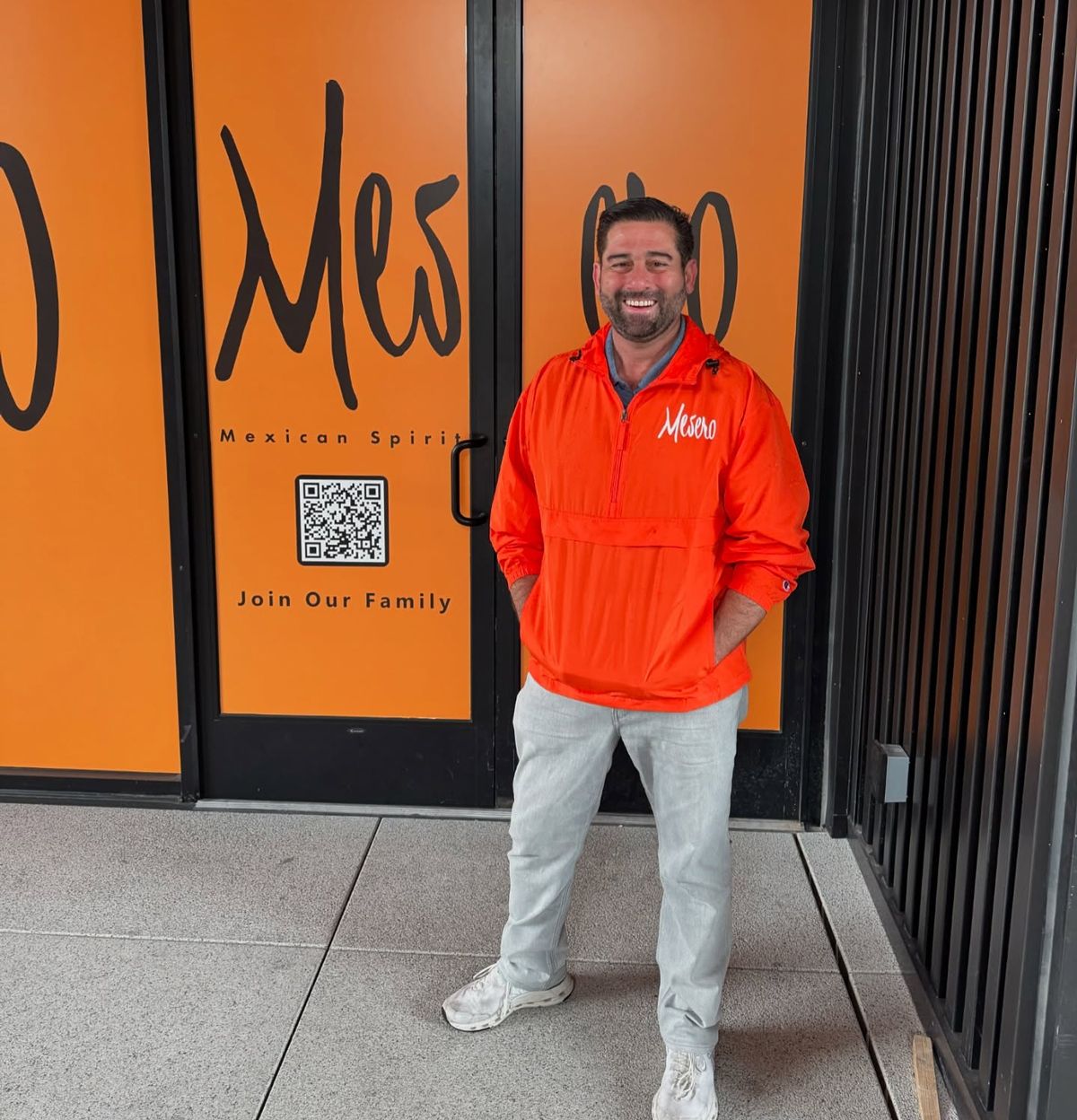At Mesero, it’s not just about the food—it’s about the feeling. Blending the bold flavors of Mexico with the comfort and flair of American dining, the growing restaurant group has carved out a distinct identity in a crowded culinary space. With nine locations across Texas, Florida and Oklahoma, Mesero’s menu is as dynamic as its atmosphere, featuring everything from brisket tacos and enchiladas to a Hollywood Cobb salad and the signature Rose Burger.
Pair that with hand-crafted margaritas and vibrant patios built for gathering, and it’s easy to see why Mesero has become a favorite in every market it enters.
At the center of that growth is CEO Trey Dyer, whose vision balances brand consistency with thoughtful expansion. In our exclusive Q&A, Dyer shares how Mesero continues to scale while maintaining its high standards, what drives the guest experience across locations, and why staying true to the brand’s roots matters now more than ever.
From operational insights to cultural philosophy, he offers a look behind the curtain of one of today’s most inspired restaurant groups.
Give us a snapshot of your restaurant brand and how it has evolved.
Mesero is a modern Mexican-American restaurant concept that celebrates the vibrant, bold flavors of Mexico while delivering an elevated dining experience. Since opening, we’ve focused on offering more than just a meal, we create an experience where every dish tells a story, every sip adds a chapter and every visit feels like coming home.
As we’ve expanded, including into new mixed-use destinations like OAK in Oklahoma City, we’ve continued evolving and tailoring each location to reflect the local community while staying true to our brand values of high-quality ingredients, exceptional service and inviting hospitality.
What type of consumer are you targeting today? How has that shifted in recent years?
At Mesero, we welcome all who appreciate bold, authentic flavors and great company. Our guests range from young professionals and families to couples and out-of-town visitors. As dining habits have shifted, we’ve embraced flexibility, making room for increased demand in takeout, delivery and al fresco options.
How does the design of your restaurants cater to the needs and expectations of today’s consumers?
Today’s diners seek more than a good meal; they want an experience that feels authentic and connected. Our design blends modern elegance with traditional Mexican details: open floor plans, natural textures and artwork create a sense of warmth and energy.
Thoughtful lighting, flexible seating arrangements and visible kitchens invite guests into the story, whether they’re celebrating or simply enjoying a weeknight dinner.
Walk us through how and why your restaurants are designed the way they are. What drives your design choices?
Every Mesero location is designed to reflect the local context while staying consistent with our brand aesthetic. We incorporate natural materials, handcrafted finishes and artistic elements that nod to Mexican culture, but interpret them through a modern lens.
For example, in a new development like OAK, we worked closely with the design team to create a space that aligns with the sleek, walkable layout of the mixed-use environment while still offering the warmth and intimacy our guests expect.
What are some of the biggest trends you’re seeing right now in restaurant architecture and design?
Sustainability and flexibility are front and center. Restaurants are investing in spaces that serve multiple purposes, intimate dinners, large groups and takeout alike, while using durable, eco-conscious materials.
We’re also seeing a continued emphasis on blending indoor and outdoor spaces and using design to enhance the guest experience. These ideas guided much of our approach in newer builds and remodels.
 How do you approach selecting new locations? What factors are most critical when expanding?
How do you approach selecting new locations? What factors are most critical when expanding?
We look for locations where the surrounding community values hospitality, quality, and atmosphere. Easy access, pedestrian flow and proximity to retail and residential density are all key. In locations like OAK, we’re drawn to the walkability and built-in diversity of guests: a mix of residents, shoppers and professionals, all of whom contribute to an all-day dining environment.
Give us a rundown of how your market layout is structured—urban, suburban, mixed?
Our portfolio includes a healthy mix of urban, suburban and mixed-use locations. Each offers a different kind of energy: urban settings provide exposure and volume, suburban sites offer loyal, repeat guests and mixed-use destinations allow us to serve a wide range of guests due to increased foot traffic driven by the residential component, greenspace, events, and more. Our goal is to design each space to reflect and support the rhythm of the neighborhood around it.
What is the biggest challenge you’re seeing on the construction side of the business today?
Fluctuating material costs and supply chain delays continue to present challenges. These issues can disrupt timelines and increase project costs, which requires us to stay nimble in our planning. We’ve responded by working more closely with our architects, contractors, and suppliers to maintain standards and adapt where necessary, without sacrificing the quality and character that define our brand.
Talk about sustainability. How is it influencing the way you build, design, and operate?
Sustainability is a growing priority in how we approach construction, sourcing and daily operations. We use energy-efficient lighting, water-saving systems and environmentally responsible materials in our buildouts. Operationally, we look for opportunities to reduce waste and source responsibly. The goal is to create restaurants that are as mindful as they are memorable, for both guests and the communities we serve.
How do you balance maintaining brand consistency with the need to innovate restaurant designs?
We think of every new location as a new chapter, not a replica. While we maintain core design elements, including rich textures, warm color palettes and a curated aesthetic, we always leave room for innovation. Each space has its own personality, shaped by its surroundings. That could mean adapting a patio to suit the climate or incorporating regional design cues that add local character without losing our identity.
What advice would you give to other brands looking to future-proof their restaurant footprints?
Build for versatility and lead with values. Your space should be able to serve multiple types of visitors and evolve with shifts in guest behavior. At the same time, stay rooted in what makes your brand meaningful. If you’re consistent in what you stand for, you’ll have the flexibility to adapt in ways that feel authentic and intentional.
What opportunities do you see for restaurant construction and design heading into the next two to three years?
As developments become more mixed-use and experiential, restaurant design has to follow suit. There’s a growing opportunity to create spaces that integrate more fluidly with their surroundings through outdoor activation, shared public space and versatile interior layouts. These environments let restaurants become part of a broader lifestyle experience, rather than just a dining destination.
 Are you optimistic about the market? What trends or data points fuel that optimism?
Are you optimistic about the market? What trends or data points fuel that optimism?
We are. Across markets, guests are looking to reconnect with others, with their communities and with thoughtfully crafted experiences. That trend gives us reason to believe that restaurants with a strong identity and a focus on hospitality will continue to thrive, especially in developments that foster walkability and shared gathering spaces.
What are some emerging trends you’re seeing around customer experience inside restaurants?
Guests are craving personalization, ease and emotional connection. That could mean intuitive service, seamless integration of technology or simply a space that feels welcoming. We’re focusing on small details that create a sense of care, including ambiance, music, lighting and pace of service, because those are often what guests remember most.
What’s the secret to creating a ‘must-visit’ dining environment in today’s competitive marketplace?
It starts with intention, making sure every element, from the food to the design to the service, supports a consistent experience. The restaurants that stand out are the ones that offer something meaningful, not just trendy. When a guest feels like they belong, they’re more likely to return.
What makes your brand stand out when it comes to architecture, experience and consumer loyalty?
We aim to create spaces that feel distinctive yet familiar, modern yet warm. Our architectural style leans into texture, light and a blend of cultural influences that reflect our roots. But it’s the experience that sets us apart. Our teams make people feel seen, and that’s what builds loyalty. At the end of the day, our guests return not just for the food, but for the feeling.
Interview by Michael J. Pallerino, Director of Content for Commercial Construction & Renovation magazine. Over the past 30-plus years, he has won numerous awards, including the “Jesse H. Neal Editorial Achievement Award,” recognized as the Pulitzer Prize for business-to-business magazines. He can be reached at [email protected].
View the original article and our Inspiration here


Leave a Reply